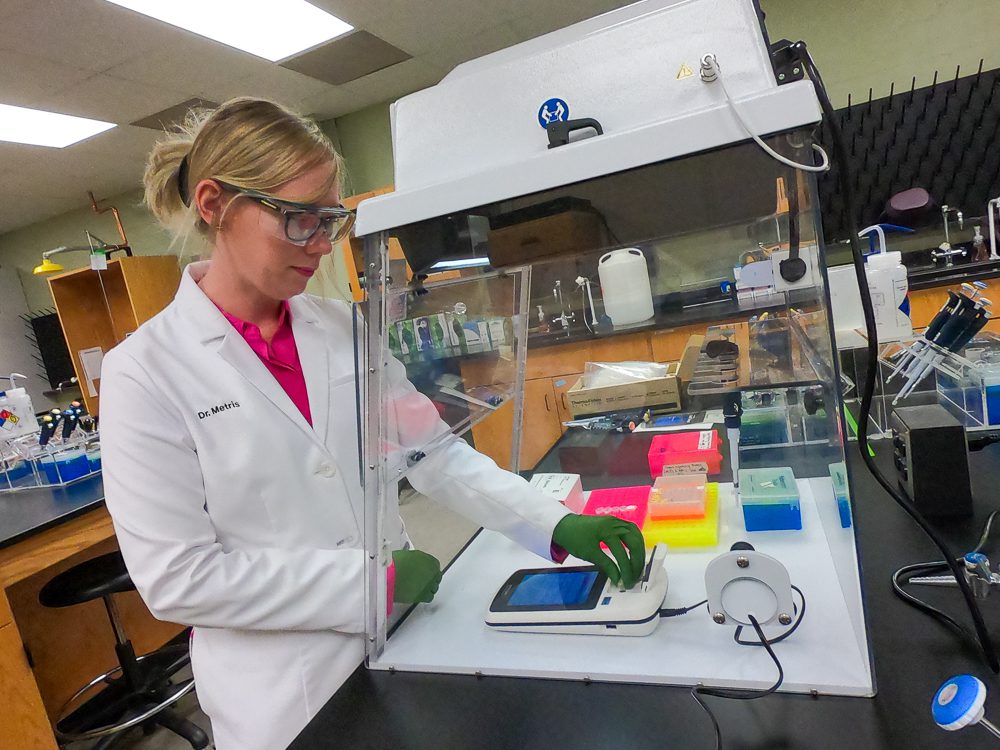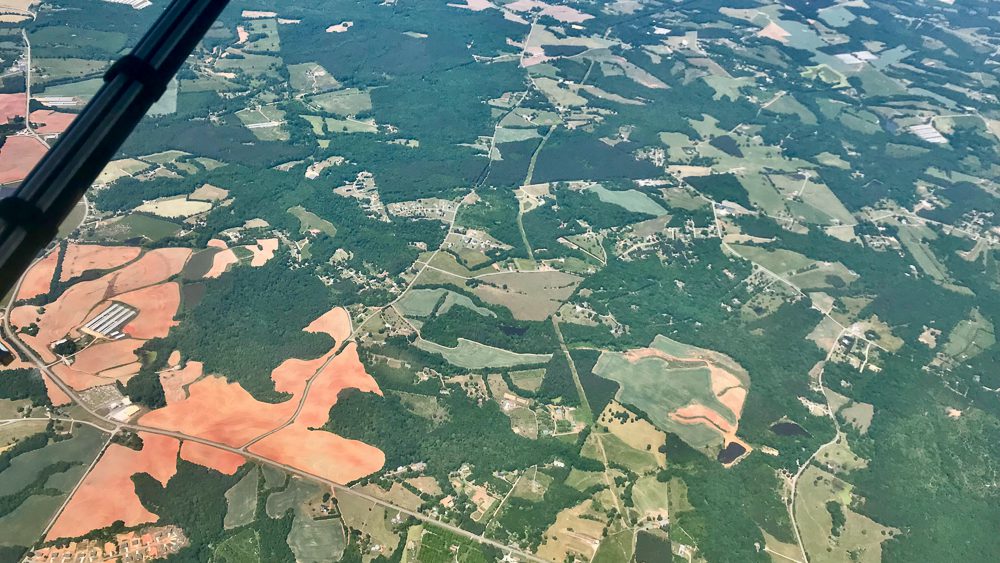As she flew through a Saharan dust plume over Anderson while piloting skydivers to their jump altitude, Clemson University geneticist and licensed commercial pilot Kimberly Métris literally saw a research opportunity before her eyes.
The atmosphere was saturated with particulate matter as transcontinental clouds of dust and sand swirled in the air, creating a visually stunning spectacle.
“Up at altitude, I could see the dust particles that made their way from Africa in these strong air currents,” said Métris, a Clemson alumna who has been a member of the Department of Genetics and Biochemistry faculty since 2019. “I pondered what genetic material was there and in the air I fly through every day.” She resolved then to conduct research to unravel the mysteries that lay above.

Long history
Atmospheric biology has a long, rich history — scientists have been studying microorganisms in atmospheric dust carried by air since the 1800s.
“Airplanes in particular are useful to cover long distances at selected altitudes in short periods,” Métris said. “As early as 1921, airplanes were used to capture biological material in the United States for plant pathogen monitoring. By the 1930s, folks like Fred Meier and Charles Lindbergh had reported collections of microorganisms from the U.S. and Arctic atmosphere by airplane.”
To conduct her research, Métris wanted an instrument that was economical, sterilizable and could be precisely controlled to sample bioaerosols directly from the atmosphere using an airplane. Such an instrument didn’t exist, so she and her husband, Jeremy Métris, developed one that features active full-flow filtration of a quantifiable, controllable volume of air and a high-integrity chamber to protect the sample from loss or contamination.
The probe can be mounted on an aircraft wing strut to sample only free stream air in front of the wing’s leading edge. It is controlled by the operator using a vacuum pump and manifold inside the aircraft cabin.

Using an aerial survey grid developed by the researchers, Métris flew over an area of more than 4,500 acres in northwest South Carolina and northeast Georgia.
The area features numerous poultry and livestock facilities; agricultural fields and forests; industrial buildings such as wastewater treatment plants, hospitals and clinics; and other urban development activity. Ground-level emissions structures were visible from the aircraft at all flight altitudes.
The researchers conducted flights in May and June 2022 and collected samples at three elevations — 1,800-, 4,500- and 8,500-feet mean sea level.
After collecting the samples, Métris used high throughput metagenomics for sequence identification.

More than 50 types
The study, recently published in the journal PeerJ Life and Environment, found the widespread, heterogenous presence of prokaryotic and eukaryotic environmental DNA in the atmosphere, reaching thousands of meters into the planetary boundary layer of the lower troposphere.
Over 50 types of airborne bacteria were sequenced, including pathogens. Common plant-based allergens from grasses, weeds and trees, and invasive weeds with antimicrobial and anti-inflammatory properties were also detected.
Surprisingly, the researchers found animal bioaerosols at high altitude, including chicken, cow and human DNA detected at all heights. DNA was also recovered from bacteria previously undocumented in the lower troposphere but reported in other extreme environments such as deep-sea sediment and the International Space Station.
Human activities such as waste disposal and treatment, agriculture and industry, as well as natural processes such as pollination and evapotranspiration can release bioaerosols with DNA and RNA into the atmosphere, propelling them to new locations.
Métris emphasized the power of atmospheric circulation in transporting these bioaerosols.
“This environmental DNA or RNA can be lifted, carried and deposited elsewhere by atmospheric mixing, lifting action, buoyancy and other air biogeography processes, potentially leading to biological consequences such as gene flow and hybridization.”
Airborne microorganisms and pollen can act as nuclei for ice and cloud formation, influencing our global climate.
“We breathe and ultimately exist in a mighty ocean of air,” Métris said. “The global pandemic is one recent example that has brought this reality to the forefront of society. Atmospheric environmental genomics is an exciting, emerging field with applications we are just beginning to explore, and the sky is not the limit!”
Detailed findings are in the paper titled “Aircraft surveys for air eDNA: probing biodiversity in the sky.”
Get in touch and we will connect you with the author or another expert.
Or email us at news@clemson.edu

